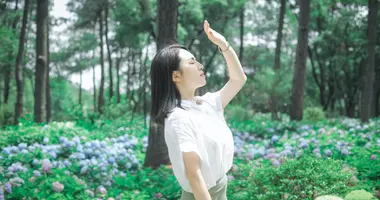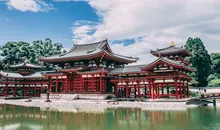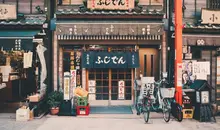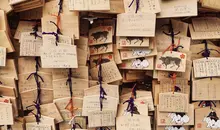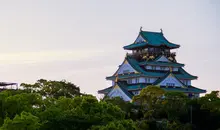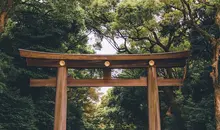Japanese Buddhism: history, schools, and cultural influence
- Published on : 25/01/2024
- by : Japan Experience
- Youtube
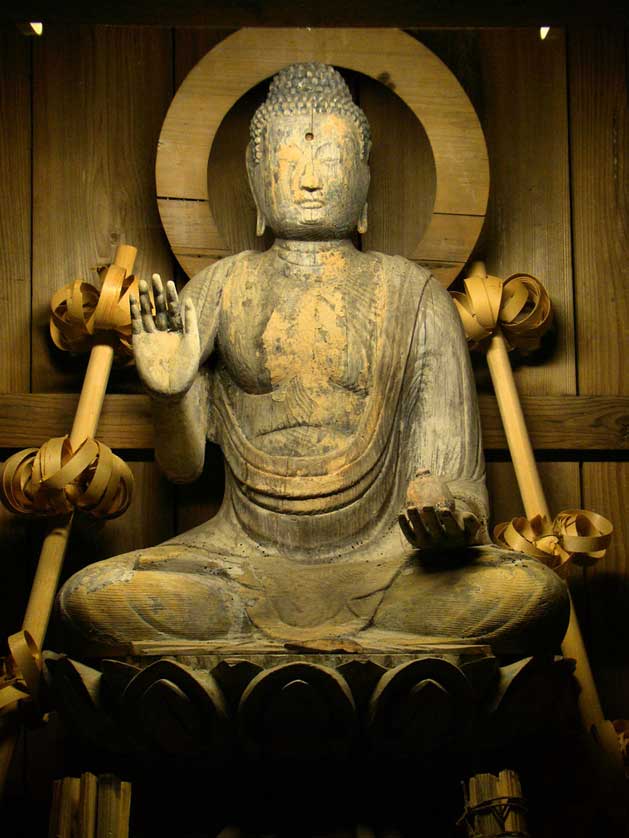
Buddhism arrived in Japan from Korea in the 6th century CE and had a profound and lasting impact on Japanese culture. Despite periods of conflict and persecution, Buddhism took root and evolved distinctively in Japan, branching off into several major schools of thought and practice. Today, around 2/3 of Japanese consider themselves Buddhists, although the religion does not strongly impact daily life for most people. Let's explore the history of Buddhism's journey to Japan, the key schools that emerged, their evolution over time, and Buddhism's enduring cultural impact.
The early history of Buddhism in Japan (6th-8th century)
According to the Nihon Shoki, Buddhism was officially introduced to Japan in either 538 or 552 CE when the king of Baekje, a Korean kingdom, sent Buddhist texts and images to the Japanese Emperor. The Soga clan, which had ties to the continent, promoted the new faith. However, the Mononobe clan, which oversaw Shinto rites at court, opposed Buddhism as a foreign influence that could anger the native kami deities.
A number of epidemics and natural disasters were attributed to this conflict over Buddhism. Eventually, with backing from Prince Shōtoku and the pro-Buddhist Soga clan, the new religion prevailed and began to spread. Shōtoku, serving as regent, was a great patron of temples and Buddhist art. By the Nara Period in the 8th century, Buddhism had become firmly established but the growing power of Buddhist institutions led the imperial court to try to limit and control the religion.
The main Japanese Buddhist schools and their teachings
The main Japanese Buddhist schools that still exist today emerged between the 8th-13th centuries:
- Tendai - Founded by Saichō in the early 9th century based on the Chinese Tiantai school. Tendai is known for its inclusive and comprehensive approach.
- Shingon - Founded by Kūkai after travelling to China. Shingon is an esoteric school that uses rituals, mandalas, and mantras to attain enlightenment.
- Amida Buddhism - Pure Land schools like Jōdo-shū and Jōdo Shinshū focused on devotion and faith in the Amida Buddha. Widely popular among common people.
- Nichiren Buddhism - Founded by Nichiren, this school reveres the Lotus Sutra as the highest teaching. Known for its simplicity, evangelism, and exclusivity.
- Zen - Introduced in the late 12th-early 13th centuries, Zen emphasizes meditation, direct experience, and the teacher-disciple relationship. The Rinzai and Sōtō sects remain active.
Each school developed its own body of teachings, practices, and institutions, drawing on particular Buddhist sutras and doctrines while adapting to the Japanese context.
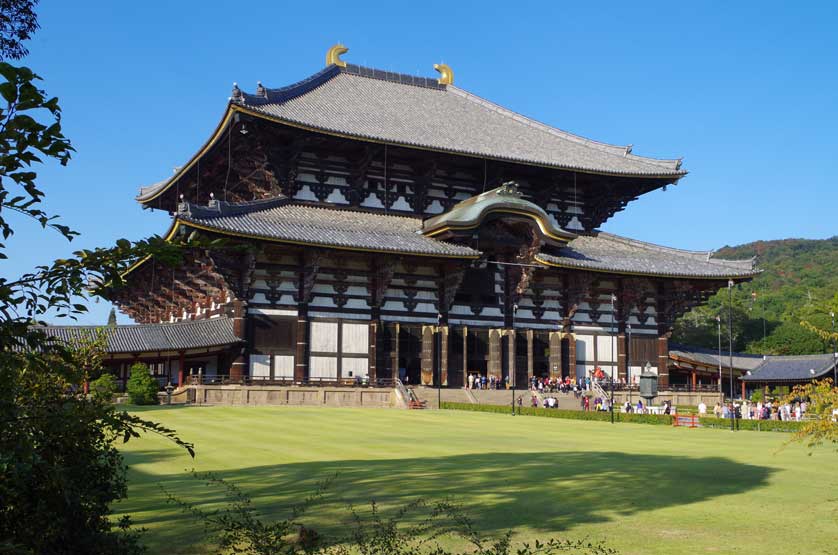
Todaiji Temple in Nara is the world's largest wooden building and houses the world's oldest gilded bronze Buddha - Daibutsu
The evolution of Buddhism in the Heian period (8th-12th century)
Two monks who studied in China, Saichō and Kūkai, founded the influential Tendai and Shingon schools in the early 9th century. With imperial patronage, these esoteric schools incorporating rituals, mandalas (diagrams of the universe), and mantras flourished. Their main temples, Enryaku-ji and Kōya-san, became major centers of power and learning.
Over the Heian period, Buddhism spread to a wider segment of society beyond the court elites. Popular forms of devotion arose, like the cult of Amida Buddha and his Pure Land paradise that anyone could be reborn into through sincere faith. Buddhist influence could be seen permeating literature, art, and society as more people turned to the religion for worldly benefits and to prepare for the afterlife.
The spread of Buddhism in the Kamakura period (12th-14th century)
The Kamakura period saw the emergence of new, reformed schools of Buddhism that emphasized faith, simplicity, and accessibility for all people. Hōnen and Shinran promoted Pure Land Buddhism based on devotion to Amida Buddha. Nichiren stressed the supremacy of the Lotus Sutra and founded an evangelical and exclusivist school.
Zen Buddhism also arrived from China and appealed to the samurai class with its focus on discipline, self-control, and meditation practice. Zen monasteries like those in Kyoto and Kamakura gained the patronage of the shogunate. During the turmoil of the period, more people turned to Buddhism for solace and Buddhists like Shinran spread their teachings widely, making Buddhism a more integral part of Japanese life at all levels of society.
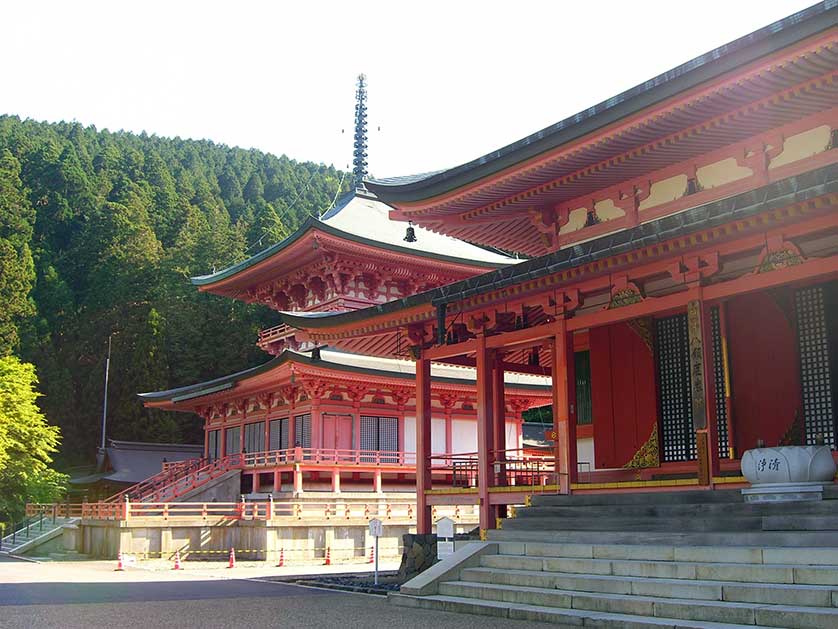
Enryakuji Temple on the summit of Mt. Hiei in north east Kyoto
Buddhism during the Edo period (17th-19th century) and into modern times
In the Edo period, Buddhism was strongly regulated by the Tokugawa shogunate. A "main-branch" temple system controlled the schools while the populace was required to register at temples and help fund them.This made temples an extension of the government's authority but also economically stable. While innovative thought and individual choice in religion were stifled, Buddhist scholarship and printing thrived.
With the Meiji Restoration in 1868, Buddhism faced a backlash as the new government promoted Shinto as the national religion and "de-Budddhified" the culture. Thousands of temples were closed and Buddhism's role was curtailed. However, new modern Buddhist movements arose that were socially engaged, internationalist, and lay-oriented. Buddhism evolved but endured as a familiar part of Japanese life, seen in temples, art, and rituals marking death.
The cultural influence of Buddhism on Japanese arts and society
Buddhism left an indelible imprint on Japanese culture. It stimulated new forms of art, from sculpture to painting to garden design. Buddhist motifs and ideas infused literature, theater, tea ceremony, martial arts, and aesthetics. Temples served not just as religious sites but as community centers for learning, health care, social interaction, and commerce.
At key historical turning points, Buddhists were at the forefront of changes in politics, scholarship, and social values. The Buddhist focus on impermanence, selflessness, and seeking an ultimate truth beyond everyday realities shaped the Japanese sense of beauty, nature, and even interpersonal relations. Even as fewer Japanese today identify as devoted Buddhists, the Buddhist worldview is deeply imprinted in the cultural DNA.
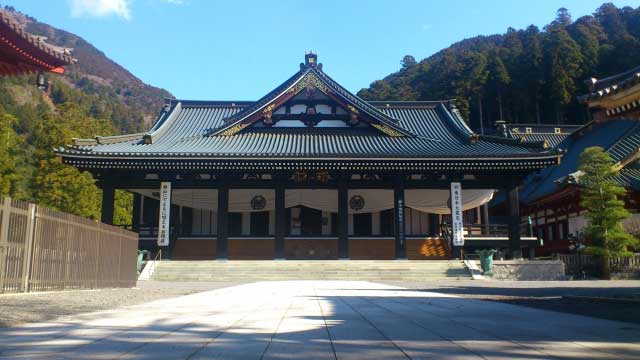
Kuonji Temple, Yamanashi Prefecture - head temple of the Nichiren-shu sect
Key elements of Buddhist imagery in Japanese art
Japanese Buddhist art depicts the historical Buddha, cosmic Buddhas and bodhisattvas, protective deities, and significant monks. Each is portrayed with distinctive features, poses, and symbols to convey their identity and role:
- Elongated earlobes, bump on head, and monk's robes - signs of Buddha's renunciation of princely status
- Hand gestures (mudras) - Convey actions like teaching, meditation, wish-granting, or dispelling fear
- Lotus flower - Symbolizes purity, enlightenment, and the Buddha's throne
- Halos and mandorlas - Represent radiance and sacrality of enlightened beings
- Multiple heads and arms - Indicate transcendent wisdom, powers, and abilities of esoteric deities
- Fierce expressions and weapons - Characterize wrathful protector deities subjugating evil
From the elegant simplicity of Zen painting to the colorful intricacy of Shingon mandalas, Buddhist art expresses and transmits the core religious concepts to deepen faith. Temples enshrine iconic Buddhist images that engage worshipers and countless Buddhist motifs are woven into daily Japanese life and art. Integrating foreign roots with local tastes, Buddhist art in Japan developed distinctive styles that shaped Japanese aesthetics.


